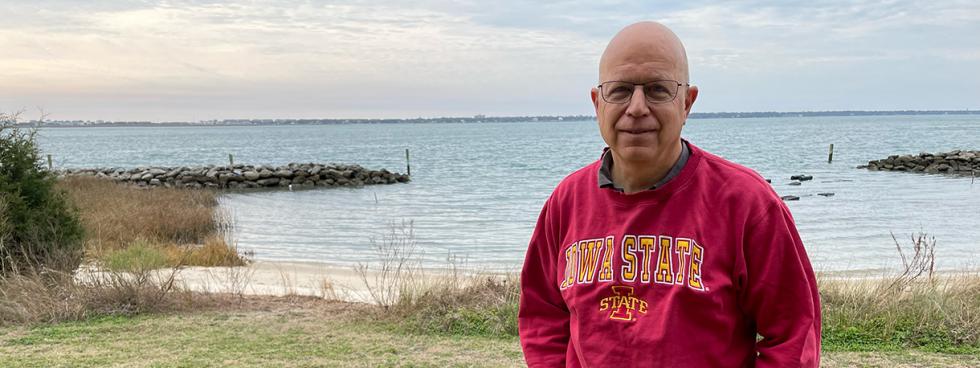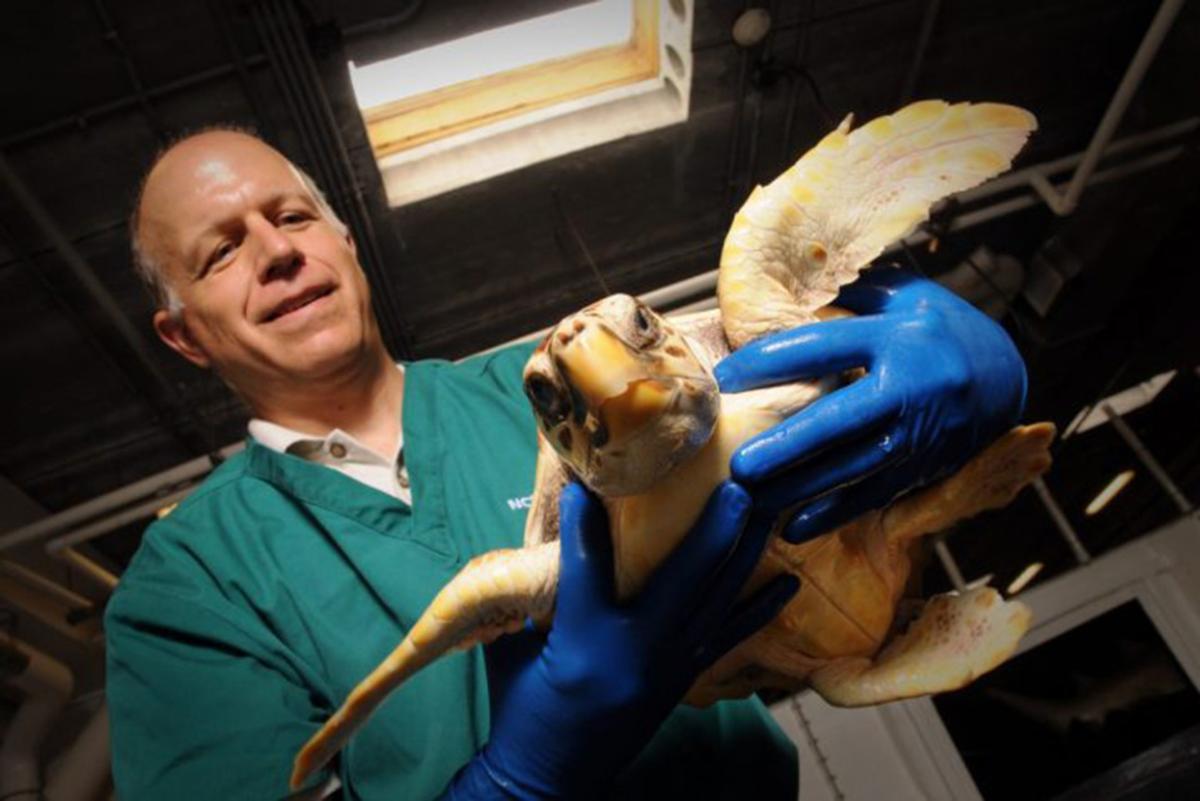
What If

When he looks back on his career, Dr. Craig Harms must wonder, “what if?”
“What if” he wouldn’t have taken a gap year after graduating from Harvard. Back then he was waffling between a career as a marine biologist or a wildlife biologist.
“What if” Iowa State’s College of Veterinary Medicine didn’t admit him after that gap year. “I didn’t think I was going to get in my first year,” Harms said. “Iowa State took a chance on me because I hadn’t taken an animal nutrition course.”
“What if” after graduating from Iowa State (’89), he wouldn’t have been selected for an internship in zoo, exotic and wildlife medicine at Kansas State University’s College of Veterinary Medicine. “I spent two years in Alaska in private practice after graduation and thought ‘I could live here,’” he said. “If I wouldn’t have gotten that internship, I would probably be living in Alaska now.”
“What if” he wouldn’t have transitioned from a residency in zoology medicine at North Carolina State University’s College of Veterinary Medicine into a PhD program at that same school. “When I finished my PhD, CMAST was looking for bodies to fill the offices and I’ve stayed here ever since,” Harms said.
There are no more “what ” in Craig Harms’ life. He has remained at North Carolina State’s College of Veterinary Medicine where he directs the Marine Health Program at CMAST (Center for Marine Sciences and Technology). There he conducts clinically applied research on health and diseases of aquatic and nondomestic species.
Some of his recent research has included identification of novel and emerging animal pathogens meeting unique anesthetic challenges for in-water sensory biology research; assessing and mitigating physiologic impact of capture techniques for wildlife research; welfare concerns for stranded large whales; and pharmacokinetics in nondomestic species.
Harms also provides veterinary services and support throughout North Carolina and the Atlantic Coast including at the North Carolina Aquariums, the Karen Beasley Sea Turtle Rescue and Rehabilitation Center, marine mammal and sea turtle stranding networks, and marine laboratories.
“All these ‘jobs’ have cross over contributions for my research projects,” Harms said. “I collaborate with a lot of different researchers.”
One of Harms’ most significant research projects is the sea turtle hearing project. Sea turtles do most of their hearing in water and have ears that are not externally visible.
“We do the testing in water, which is more difficult than testing them in air, but they spend way more time in water than on land,” Harms said.
He spent most of last March and April in the island nation of Dominica studying hawksbill sea turtle hearing as part of the Bureau of Ocean Energy Management project. There he sedated the turtles for in-water hearing testing.
“That was a tall order,” Harms said, “but it is challenges like this that really stimulate me.”
The Dominica study is just one of the many projects that takes Harms around the world. Google “Craig Harms DVM” and you come up with countless stories of Harms and his aquatic adventures.
One article is titled “Craig Harms: Saving Lives, One Sea Turtle at a Time.” Another highlights his work investigating turtles’ sound threshold. Yet another one chronicles his work caring for cold-stunned sea turtles.
Just this past summer he spent a month in Norway as part of a team conducting research on minke whales.
And Harms is one of the few veterinarians in this country who focus on marine mammal medicine.
“There’s just a couple hundred of us,” he said. “But it’s the quality of our care that matters, not the quantity providing that care.
“Working with aquatic animals doesn’t need to be harder than practicing on dogs and cats. The same basic veterinary principles apply. We use the same tools.”
